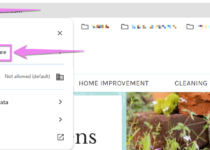How Technology is Transforming the Landscape of Digital Marketing – CXOToday.com
By Sri Hari
Half the money I spend on advertising is wasted; the trouble is I don’t know which half. – John Wanamaker
Brands are always in pursuit to improve the bang for buck on their ad spends. Digital helps bridge that gap and helps brands identify “which half”. Earlier used as a simple me-too channel, digital, now take a lion’s share of any brand’s wallet. Digital Media spends in 2023 stood at over INR 39,000 crore, showing the rapid adoption of digital. With that scale of digital media spend, technology had to evolve to keep up the economics of returns for brands. This technology eases a lot of the issues that consumer obsessed CMOs and CEOs grapple with everyday.
Whole new Revenue Channel
Now digital has established itself as a strong revenue channel. For a few brands, we have taken the revenue share of digital channels from 5% of overall revenue to 40% of overall revenue in a lot of brands. Not only that, this revenue from digital is significantly more profitable thanks to automations in place which drive up the margins. Finding a channel that could contribute a large chunk of revenue to your P&L is extremely attractive.
Technology has overcome the brands’ challenge of distribution. Most brands can now plug & play with fulfillment partners such as ship rocket, delhivery etc. to enable direct sale of goods, cutting out on distribution and retail costs.
Testing ground
CMOs and CEOs are ever hungry to test out consumer hypotheses, insights and communication to learn if they’ve hit the ad nail on the head. This previously would entail having controlled on ground testing, cumbersome and expensive feedback mechanism through survey and market research. The research in many cases fails to capture the subconscious reaction of consumers and gives inaccurate feedback. Now, thanks to technology, brands can conduct brand lift surveys (BLS) on various aspects such as recall, awareness, and consideration to more accurately measure the impact of their marketing results. These surveys are evolved enough to automatically segregate controlled and exposed groups to drive more statistically significant learnings. One such instance is where we worked with a personal care brand where we tweaked minor elements based on the BLS and drove 20% additional awareness.
Measurement
For the first time in history, CMOs can now measure the impact of even awareness campaigns. Evolution of technology not only gets them to view a full funnel picture but also helps measure cross environment conversion. They can now establish a path to conversion where they can measure which publisher is giving the brand maximum impact. Brands measure the impact of communication using proxy metrics such as CTR, FFR, TSR on each of their target personas. The brands now use tools such as MS Clarity, GA4 and Adobe Analytics measure behavioral and interaction metrics which help the brands understand more about their customers.
Frequency Building
One of the most important building blocks of any advertising is frequency (how many times a consumer sees your ad.) Frequency determines effectiveness and impact of your campaigns. Many brand gurus suggest a minimum frequency of 3-5 per week. Brands can now control or target the number of ad exposures they get for each consumer group that they target. And now, thanks to evolved ad tech, brands can spread out the ad frequency over different platforms. Many brands now leverage this for sequential storytelling. Which is, they create audience pools of customers who have seen the first ad and target them with a second ad and so on. This kind of a storytelling approach was previously not possible.
Engagement & Retention
Now, brands control their messaging and offering to each of their target audiences. This helps them with keeping their customers engaged thus driving up retention. Customer lifecycle management tools such as clevertap, moengage etc. are used to model customers into various buckets. Brands can build retention strategies on each of these buckets. An example of that is a RFM modeling which is Recency, Frequency and Monetary which is a customer loyalty modeling framework which classifies customers into buckets such as – Loyal, Promising, At Risk etc. which then enables the brands to take appropriate measures to retain their customers.
In conclusion, the evolution of technology is redesigning the way brands converse with their customers. It has made possible the kind of nuanced interactions that brands would love to have. It has deepened a brand’s understanding of their customers.
(The author is Sri Hari, Chief Business Officer of GenY Medium, and the views expressed in this article are his own)


